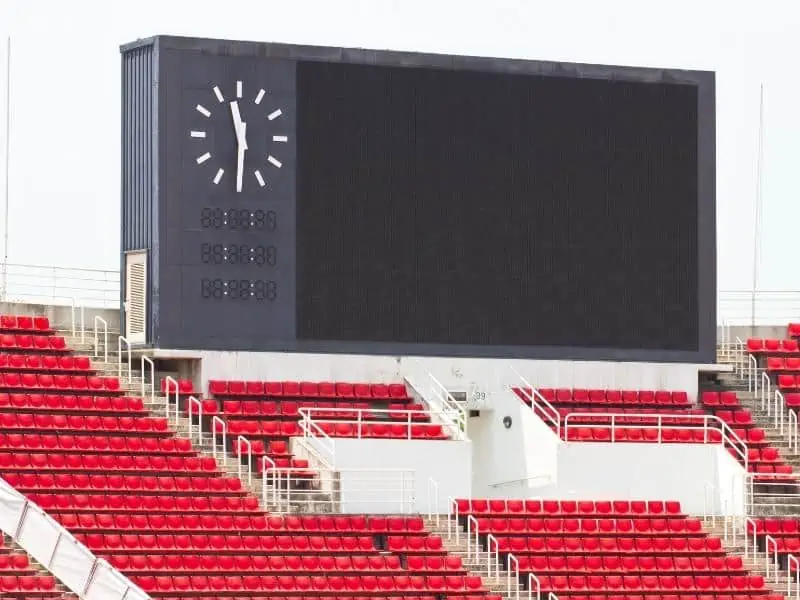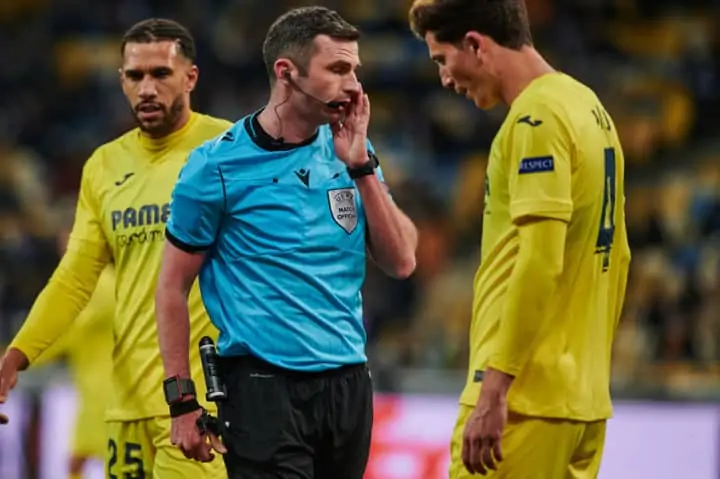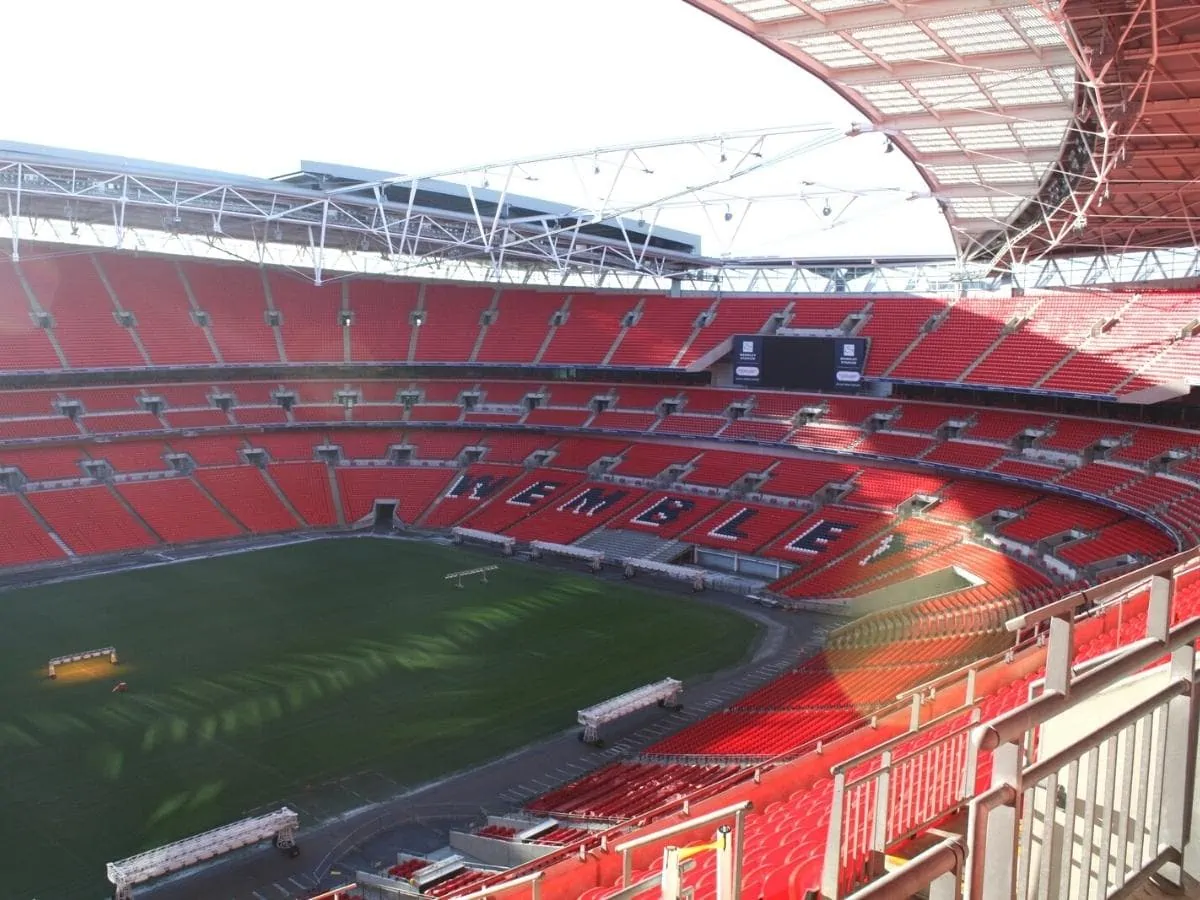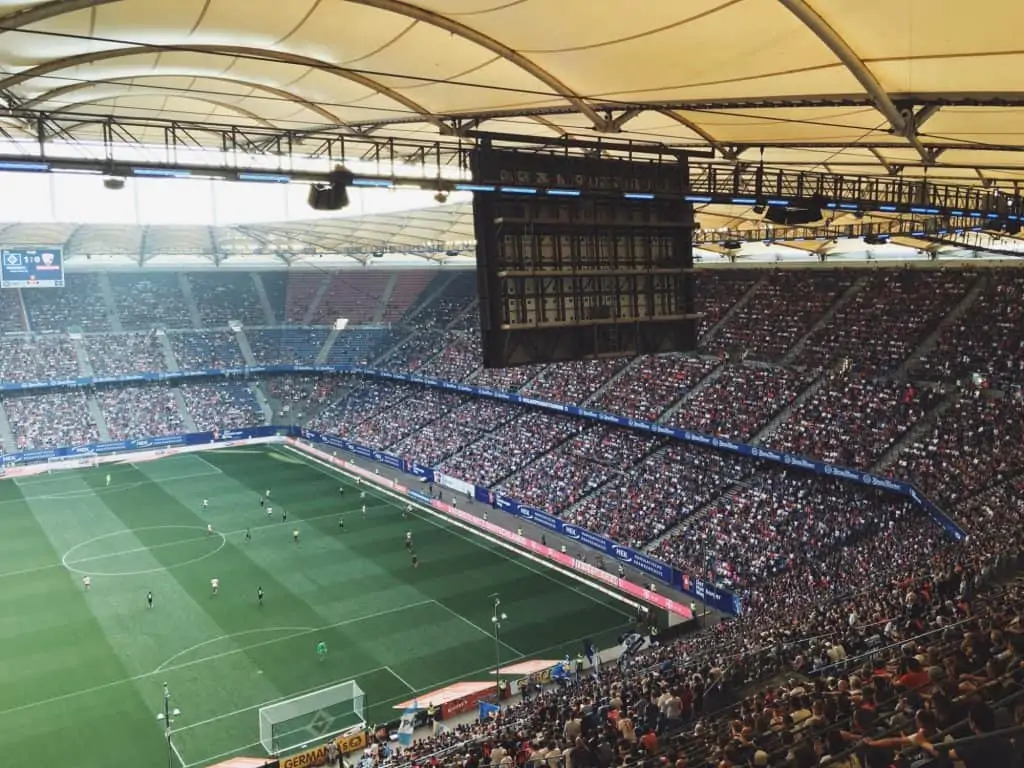Share the post "Why Soccer Counts Up (How Soccer Time Works)"
The clock is one of the essential aspects of almost all sports, and when it comes to soccer, the sport would never be the same without it. As a soccer fan, you’ve probably noticed that the clock counts up rather than down, unlike in many other sports.
But why does soccer break the tradition when it comes to the clock?
There must be a good reason behind it. The good news is, there is, and this is precisely why we’re here; we’re here to give you all the answers you need about why the soccer clock counts up and how the time works.

How Does the Clock Work in Soccer?
A soccer match lasts 90 minutes, divided into two 45-minute halves. Between the 2 halves, the referee gives the players a 15-minute break, known as halftime.
The referee is ultimately responsible for managing the times. The referee uses a stopwatch or wristwatch to keep time during a game.
When the game begins, they’ll take track of the time. Finally, when the given time is up, they’ll blow the whistle to end the game.
Watching a soccer game and seeing the clock go past 45 minutes for a half or 90 minutes for a whole match can be confusing.
The explanation is that there is extra time at the end of the half. This is called stoppage time, leading us to the next point.

Stoppage Time
To understand why the clock counts up in soccer games, you also need to understand stoppage time. Stoppage time is why soccer games often last longer than 45 minutes per half or 90 minutes per game.
It’s added to the end of each half to compensate for any time lost throughout the match due to substantial delays like substitutions or time-wasting.
Not only is stoppage time added at the end of the game, but it is also added at the end of each half. This is why the clock reaches more than 45 minutes in the first half but will reset to 45 minutes at the start of the second half.
Stoppage time is a part of the game mainly to prevent anyone from purposely stopping the game from resuming after the stoppage.
But why would a team want to do that anyway?
When one team is ahead, it’s best for them for the opposition to be given fewer opportunities to score any goals. One strategy was to keep a game from restarting as long as possible by prolonging stoppages in the hopes that the opposing team would run out of time.

Why Does Soccer Count Up?
One aspect of soccer’s simplicity is using an up-counting clock rather than a down-counting clock. This makes it easy for soccer to be played anywhere, from small fields that friends play on to 100,000-seat stadiums.
Since a continuous clock counts up, rather than depending on a countdown timer, a single referee is able to monitor time using just a timepiece. While it is true that a simple watch can be used as a countdown timer, the management of any delays or breaks in a match is where things get tricky.
When there is a stoppage in play, sports that employ a countdown timer will stop the timer, and once the play resumes, so does the timer. On an analog watch, this is more difficult to handle.
The referee is forced not only to note the exact time the match stopped and restarted but also to add that time at the end of the original time at which the match was scheduled to end.
It may be acceptable to do so once, but games usually have several stoppages. It’s asking a lot of a referee to keep track of them, so it’s much easier to count up rather than down.
Consider the following scenario: you are in charge of maintaining time for a soccer match, and all you’ve got is a primary analog wristwatch.
When you use a clock that counts up, you can know exactly when the match will end from the minute you start it. You must keep monitoring the watch and signal once the match is over. Sounds a lot easier than a down-counting clock, right?

The Discretion of The Referee
The referee notes any delay or stoppage during a match, who then uses their discretion to add the same amount of lost time at the end of each half.
For example, if a referee estimated the total stoppage time throughout one half of the soccer game to be 5 minutes, the referee would add 5 minutes to the match at the end of the half.
In a professional soccer game, however, timekeeping is handled considerably more strictly, with an off-field assistant who keeps track of the length of the stoppages in the game.
Why It’s Not Possible to Simply Stop the Clock
Since soccer uses stoppage time and assistants to manage time, the clock does not stop in soccer, at least not in professional games.
In amateur games at a lower level, a referee might stop the clock in stoppages to better manage time, especially if the referee has no assistants.
A referee can stop or start the watch at every stoppage to increase the accuracy in their timings and then stop the match when the timer gets to 45 minutes, or they can estimate the duration of the stoppage.
The clock never stops counting during a professional game because the referee or the assistant estimates the stoppage time. And the assistant is simply showing the referee the bare minimum of stoppage time, which can be played.
When deciding when a game will end, the referee will depend on their discretion. Most referees end a game when there is a natural pause in play rather than holding to one or two seconds.
When a player is in the middle of an attack, the referee waits until that attack is finished before calling the game off.
Of course, fans and players appreciate the referee’s discretion in this situation.
Share the post "Why Soccer Counts Up (How Soccer Time Works)"
Joel is a seasoned soccer journalist and analyst with many years of experience in the field. Joel specializes in game analysis, player profiles, transfer news, and has a keen eye for the tactical nuances of the game. He played at various levels in the game and coached teams - he is happy to share his insight with you.



